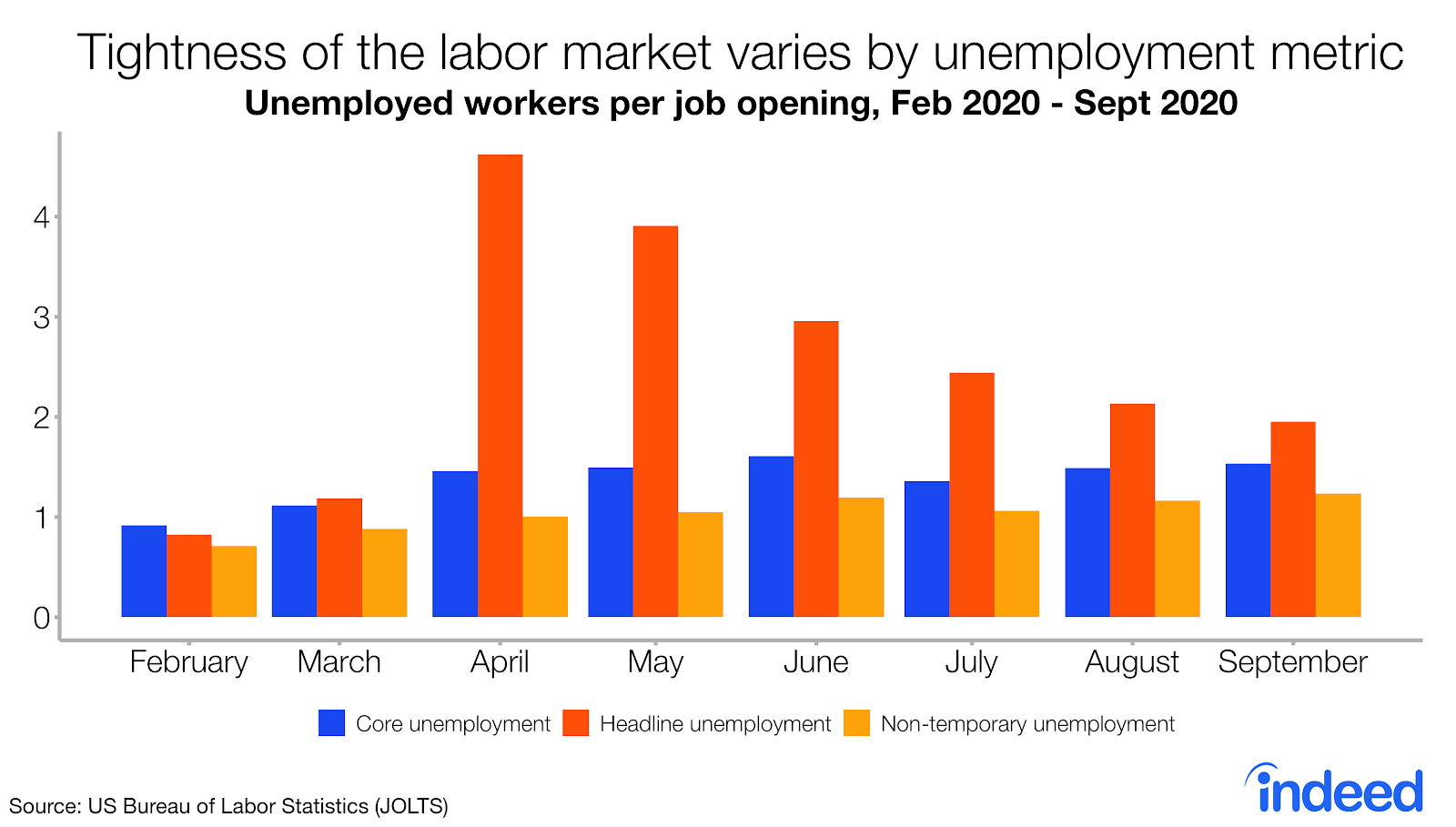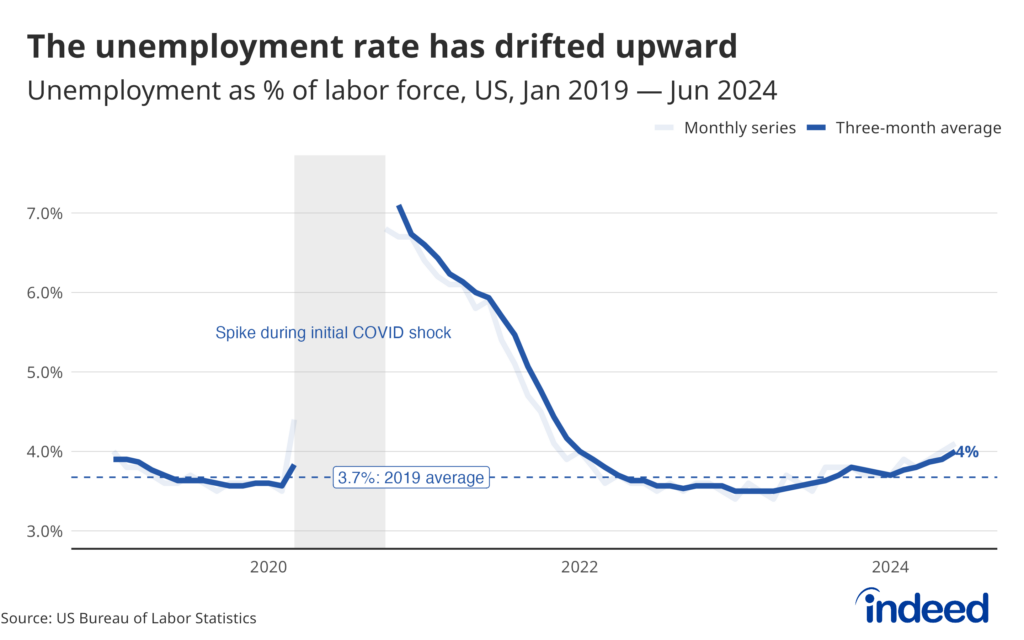The fact that there was not much change in the latest data from the federal Job Openings and Labor Turnover Survey (JOLTS) is a bad sign for this labor market recovery. The number of job openings didn’t really change from the month before. The quits rate, a sign of worker confidence, was also very similar to the prior month. For signs of a strong labor market recovery, both of these numbers need to rise. That is not what we are seeing.
Another concerning sign is that while layoffs went down in September, the outlook for jobless workers looking for a new job worsened. A measure of unemployment that more fully captures permanent unemployment— the ratio of unemployed workers to job openings — increased in September.
It’s hard to see any signs of backsliding, but there aren’t any signs of acceleration in the recovery either. Hiring isn’t speeding up, and, if job openings are any indication, it is unlikely to do so in the near term. In a labor market with 10 million fewer jobs than February, we need to see hiring moving at a faster clip to avoid lasting damage.






